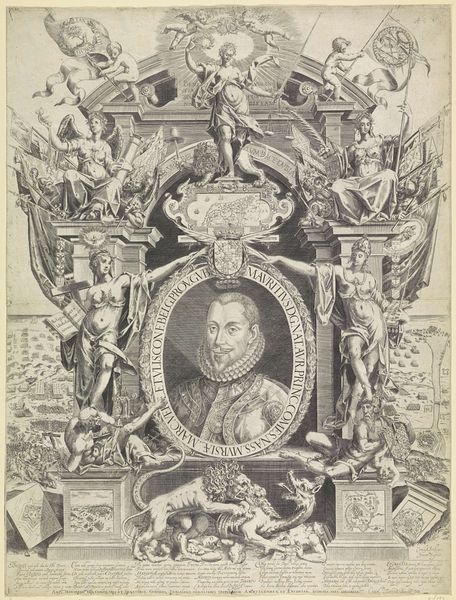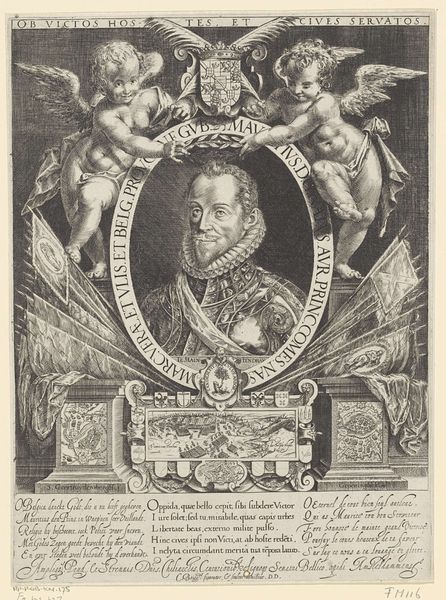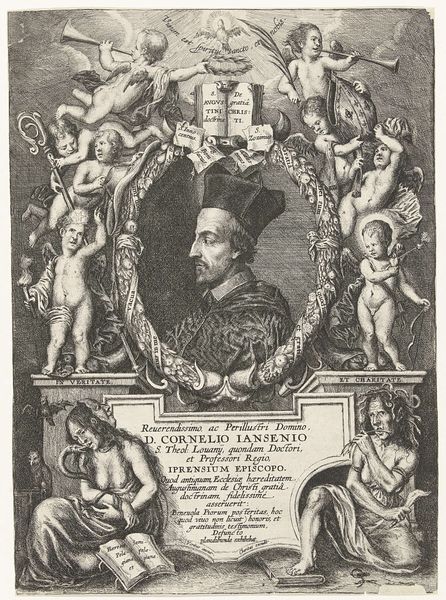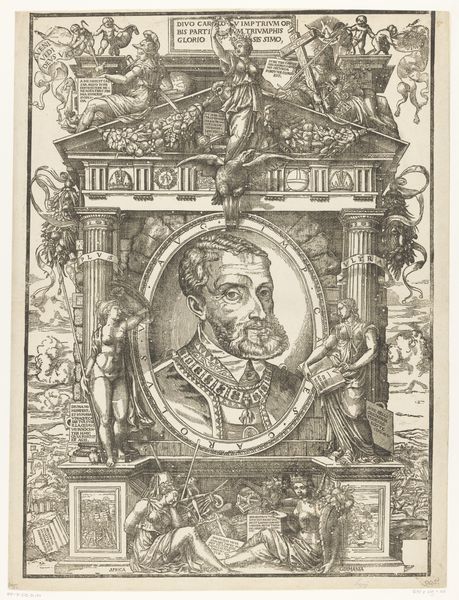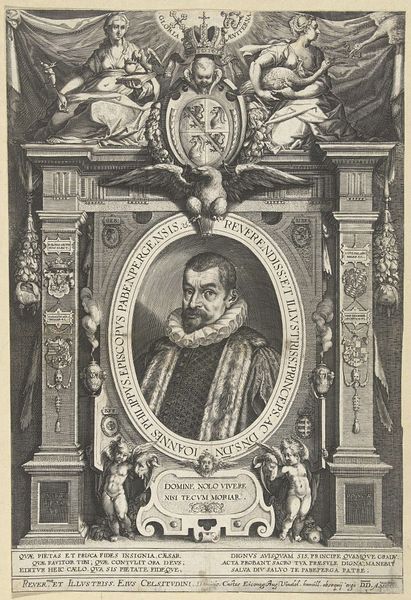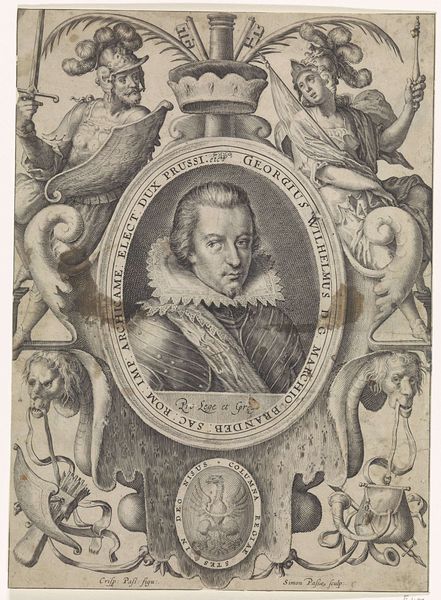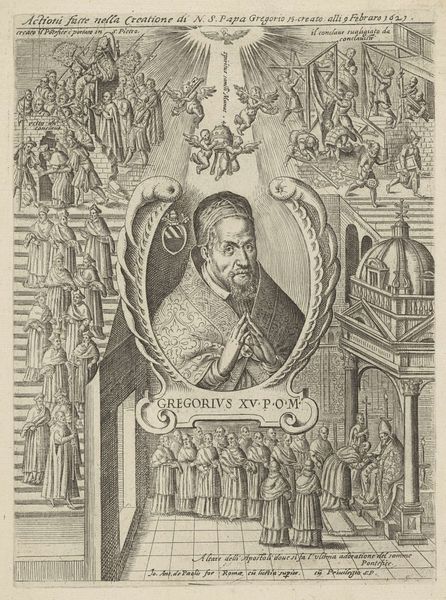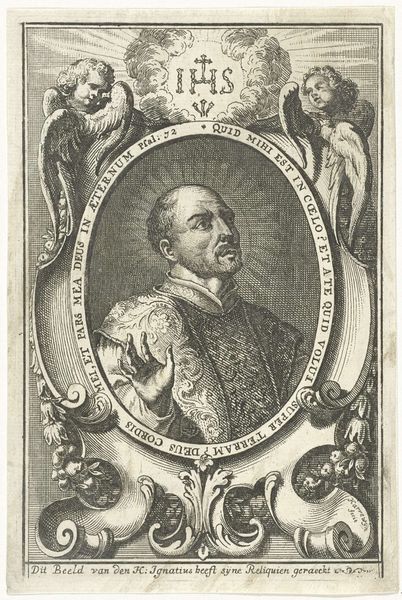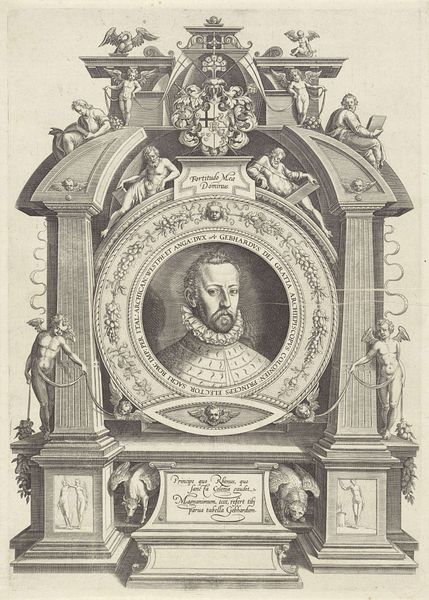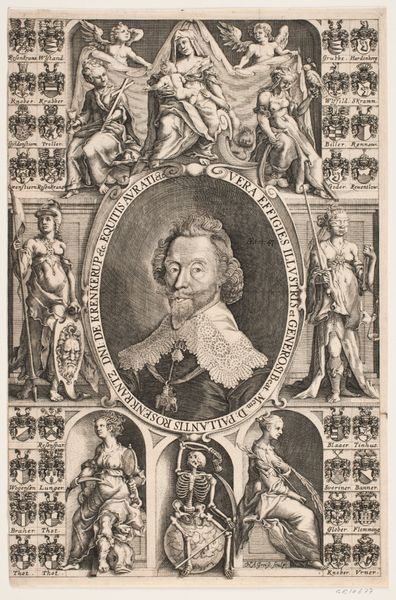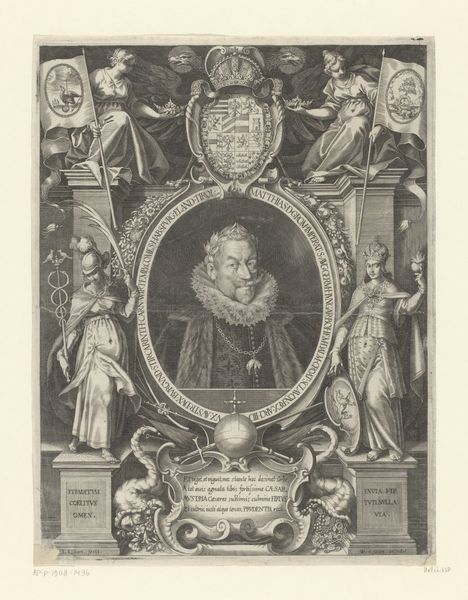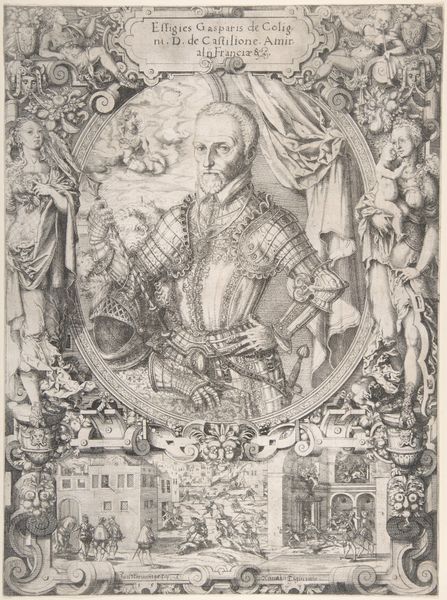
print, engraving
#
portrait
#
baroque
#
dutch-golden-age
# print
#
figuration
#
history-painting
#
engraving
Dimensions: height 294 mm, width 216 mm
Copyright: Rijks Museum: Open Domain
Editor: This is "Portrait of William I, Prince of Orange," an engraving by Cornelis Dircksz. Boissens, made sometime between 1593 and 1634. The detail is incredible; it feels both formal and also quite intimate given its small size. What do you see in this piece, looking at it from a historical perspective? Curator: Well, what immediately strikes me is how this print operates as a carefully constructed piece of political imagery. Consider the context: Willem van Oranje, or William the Silent, was a pivotal figure in the Dutch Revolt. Prints like this were crucial in shaping his image, especially after his assassination. Notice how the inscription almost deifies him - DIGNVM LAVDE VIRVM MVSA VETAT MORI- A hero worthy of praise whom the muse forbids to die! Editor: So it’s about solidifying his legacy? A piece of propaganda? Curator: Precisely. Look at the surrounding iconography: angels, heraldic symbols, and even scenes from his life depicted below. The entire composition elevates him to near-mythical status, essential for galvanizing support for the Dutch cause and also legitimising a state. Consider, too, how easily prints could be disseminated; this image could reach a far wider audience than a painted portrait. Editor: So, it's not just art, it's a form of early mass communication? The baroque flourishes certainly give him importance. Curator: Exactly. And what does it say about power and public image during that turbulent period in history? Prints like this were a vital tool in shaping collective memory and political sentiment. The choice of representing him through engraving makes a clear statement in a moment where new identities are shaped, a historical artifact deeply entrenched within a struggle for liberty. Editor: That's a very insightful. It changes how I see the image completely! Now I can notice how he is styled almost to give him immortality, or that eternal quality you have been mentioning! Curator: Indeed. Hopefully, we have both understood how a mere “portrait” actually engages within public imagery and power at the moment.
Comments
No comments
Be the first to comment and join the conversation on the ultimate creative platform.
